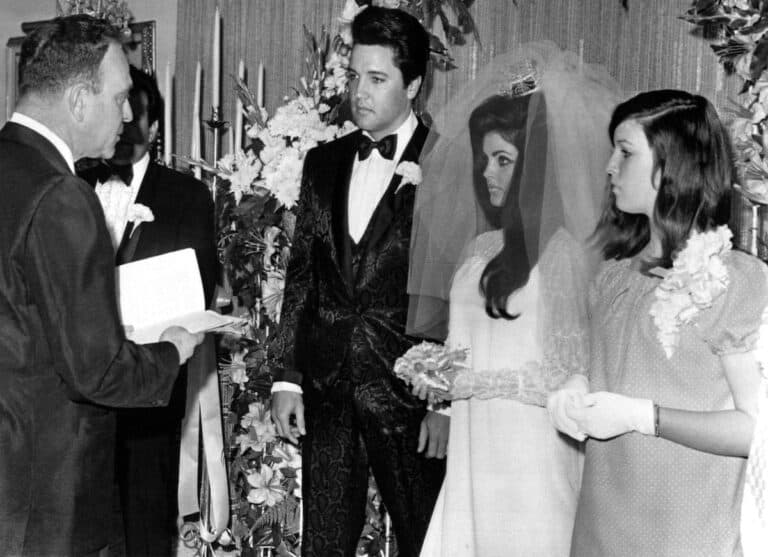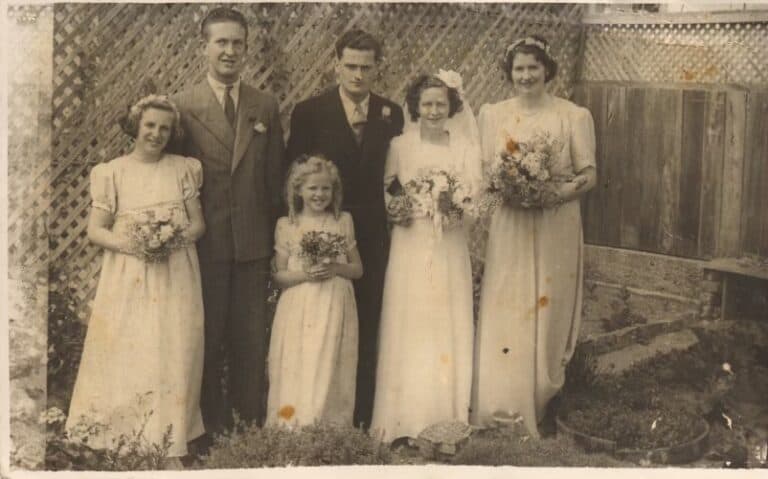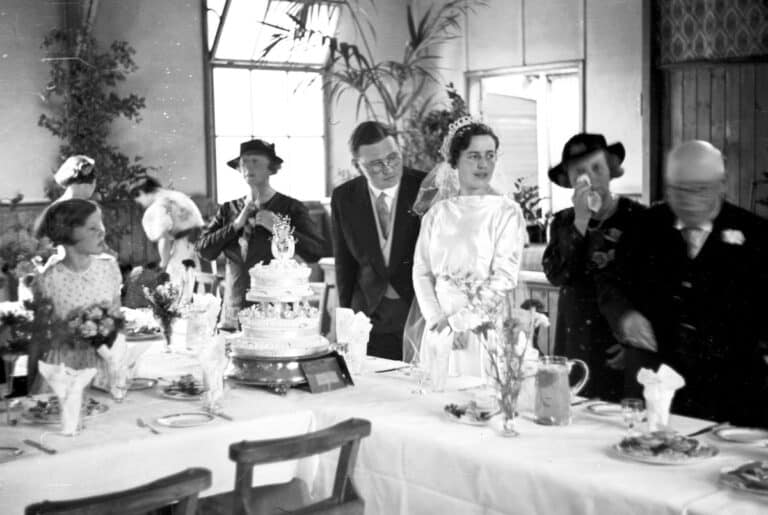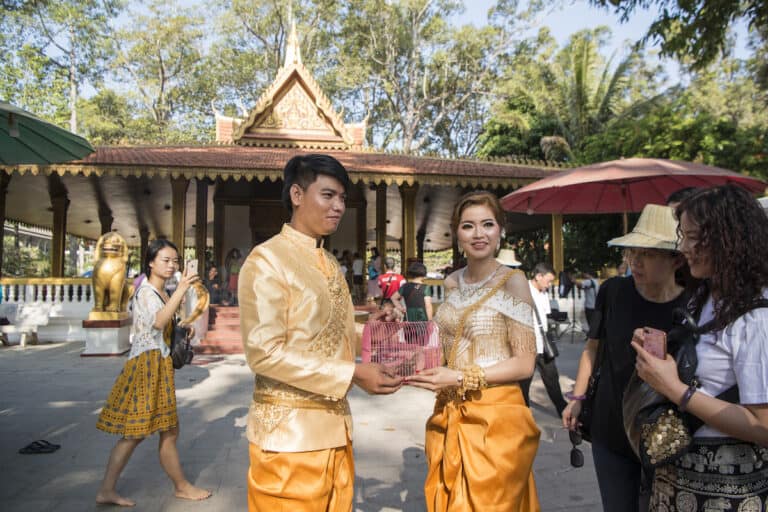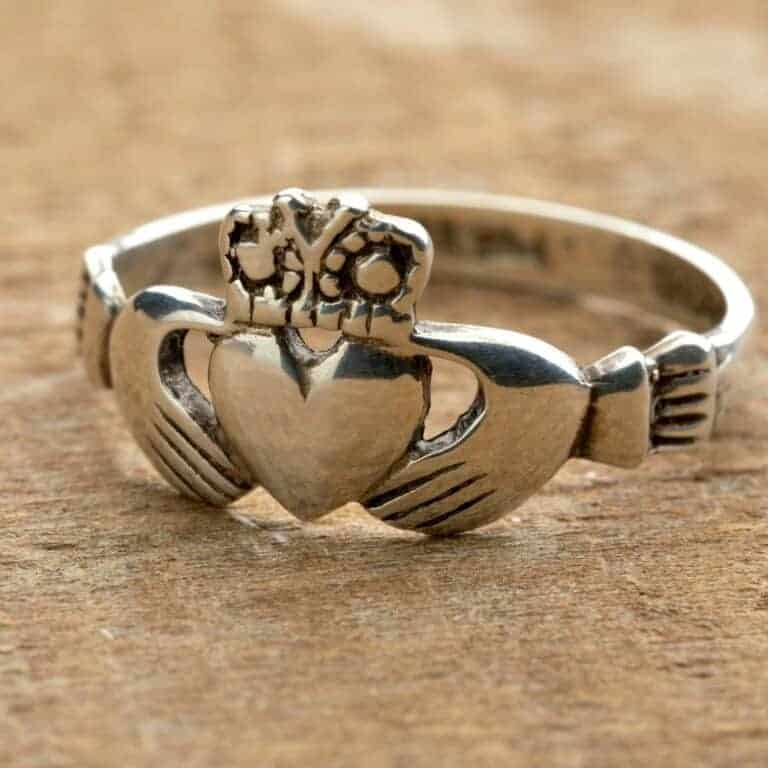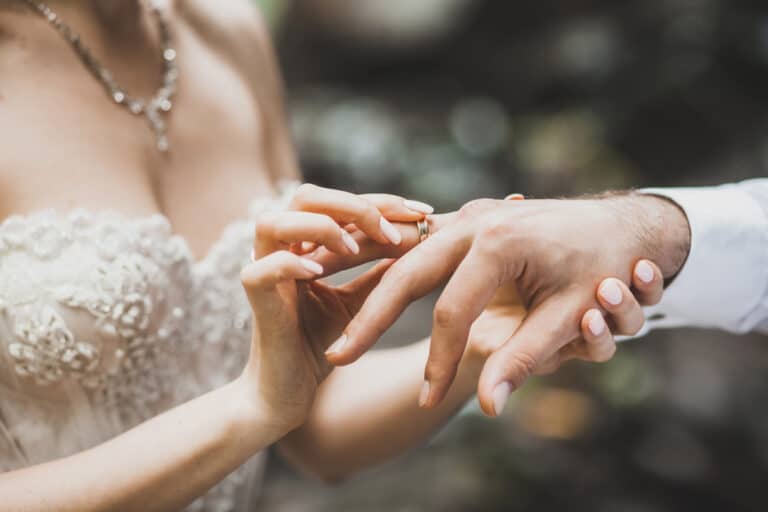A Peek Into A 1920s Wedding
The 1920s in America were a decade of glitz and glamor, characterized by flapper fashion, jazz music, and speakeasy culture. Weddings during this time reflected the cultural changes that were taking place. Couples embraced new trends in fashion, music, and entertainment.
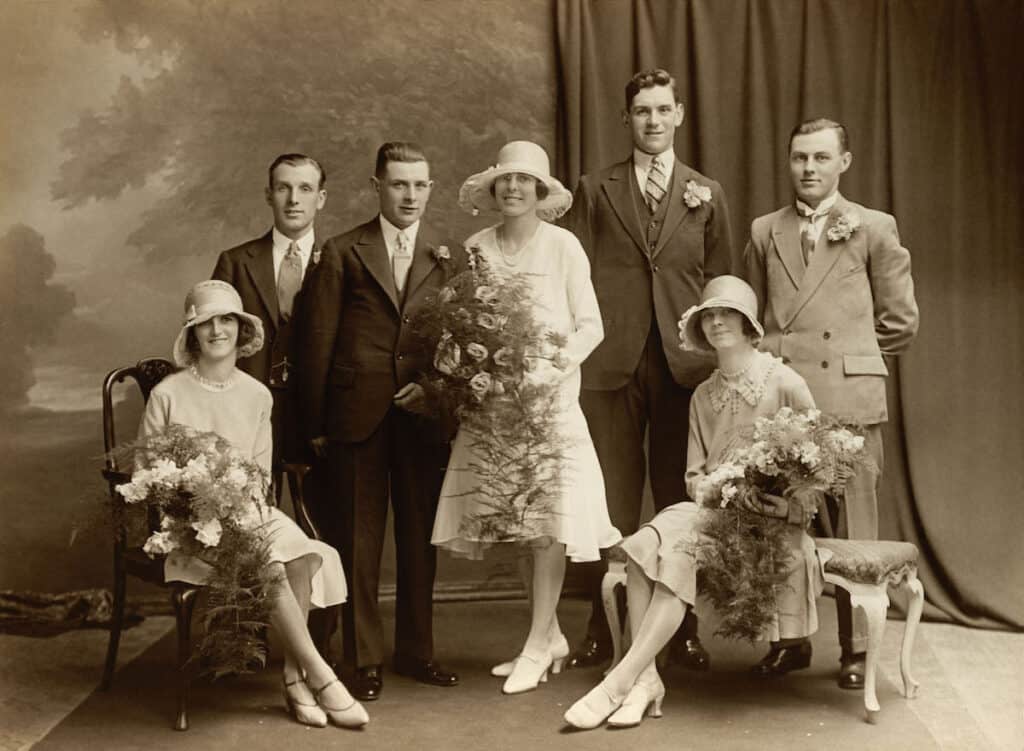
1920 Wedding Fashion
The silhouette of 1920s wedding dresses was characterized by a straight, drop-waist shape that emphasized the sleek lines of the body. Dresses were designed to hang loosely from the bust down to the hips, with the skirt flaring slightly at the hem. This silhouette was achieved using lightweight, flowing fabrics such as chiffon, crepe, and silk.
The necklines were typically straight across or slightly curved, with some dresses featuring a cowl neckline. Some featured sheer, flowing sleeves that added a touch of romance and elegance to the overall design.
The fabrics were lightweight and flowing. This allowed the dresses to move and sway with the wearer’s movements. Chiffon, crepe, and silk were popular choices, as were delicate laces and intricate beadwork. Art Deco-inspired designs were also common. Geometric patterns and beaded fringe added a touch of glamour and sophistication to the dresses.
Accessories played an important role in completing the overall look of a 1920s wedding dress. Brides often wore cloche hats or headbands. Long strands of pearls were also a popular accessory, as were beaded bags and gloves.
White was still the most popular color for wedding dresses in the 1920s. However, other colors, such as ivory, champagne, and pastels, were also popular. Bold colors such as red, navy, and emerald green were worn by some brides. Particularly those looking to make a statement.
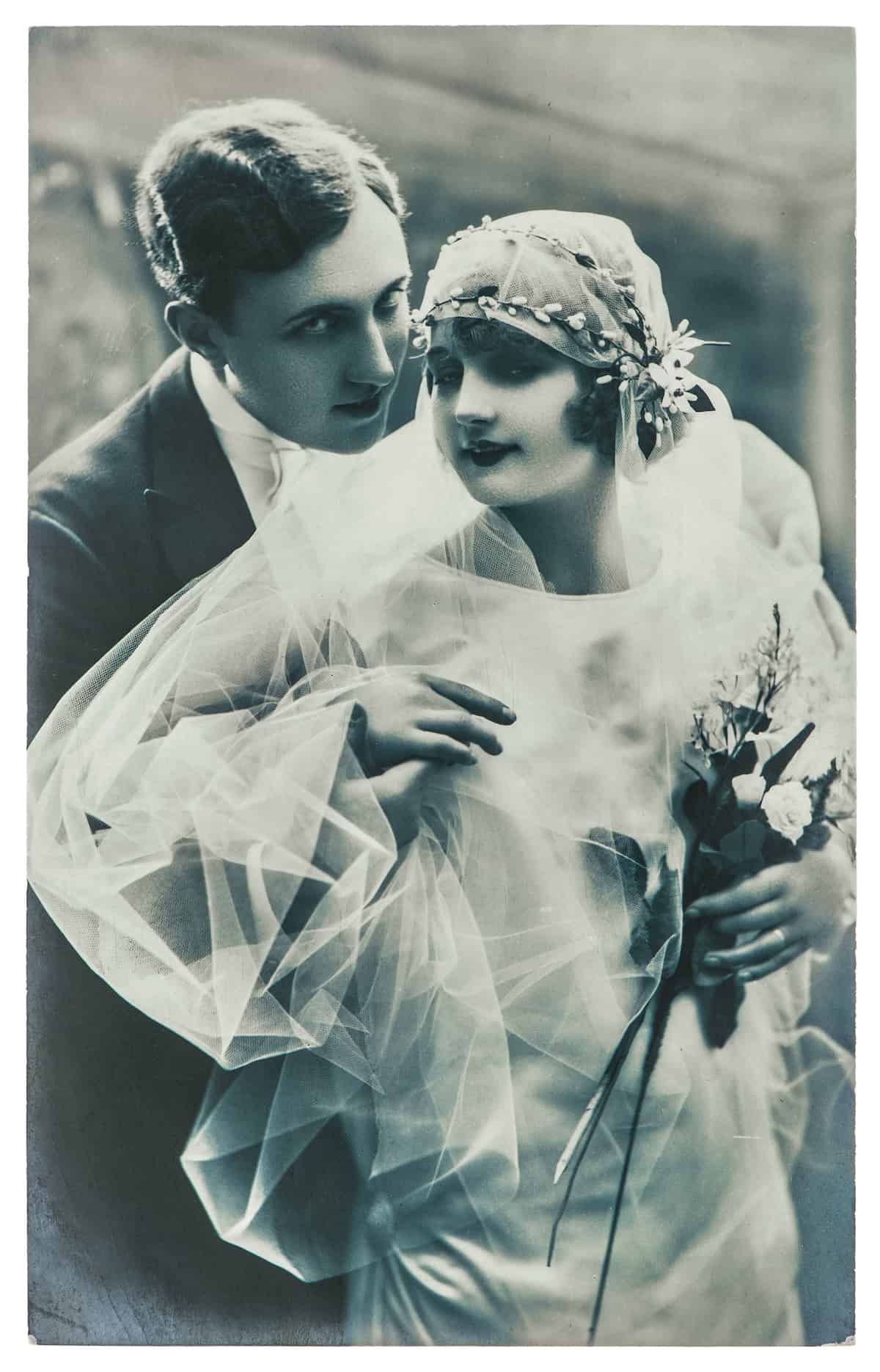
Men’s fashion
The most common thing worn by grooms in 1920 were suits. Usually made of wool and featured a high waist, wide lapels, and a single-breasted jacket with two or three buttons. The 1920s was all about the details, and men’s wedding fashion was no exception. The most popular accessories for grooms included a bow tie, a pocket square, gloves, and a fedora or other type of hat.
Depending on the time of year, grooms might have worn an overcoat to their wedding. The most popular overcoat style in the 1920s was the Chesterfield coat, a long, single-breasted coat with a velvet collar.
Cufflinks were a popular accessory for grooms in the 1920s. They were usually made of silver or gold and featured a simple design, such as a monogram or a geometric pattern.
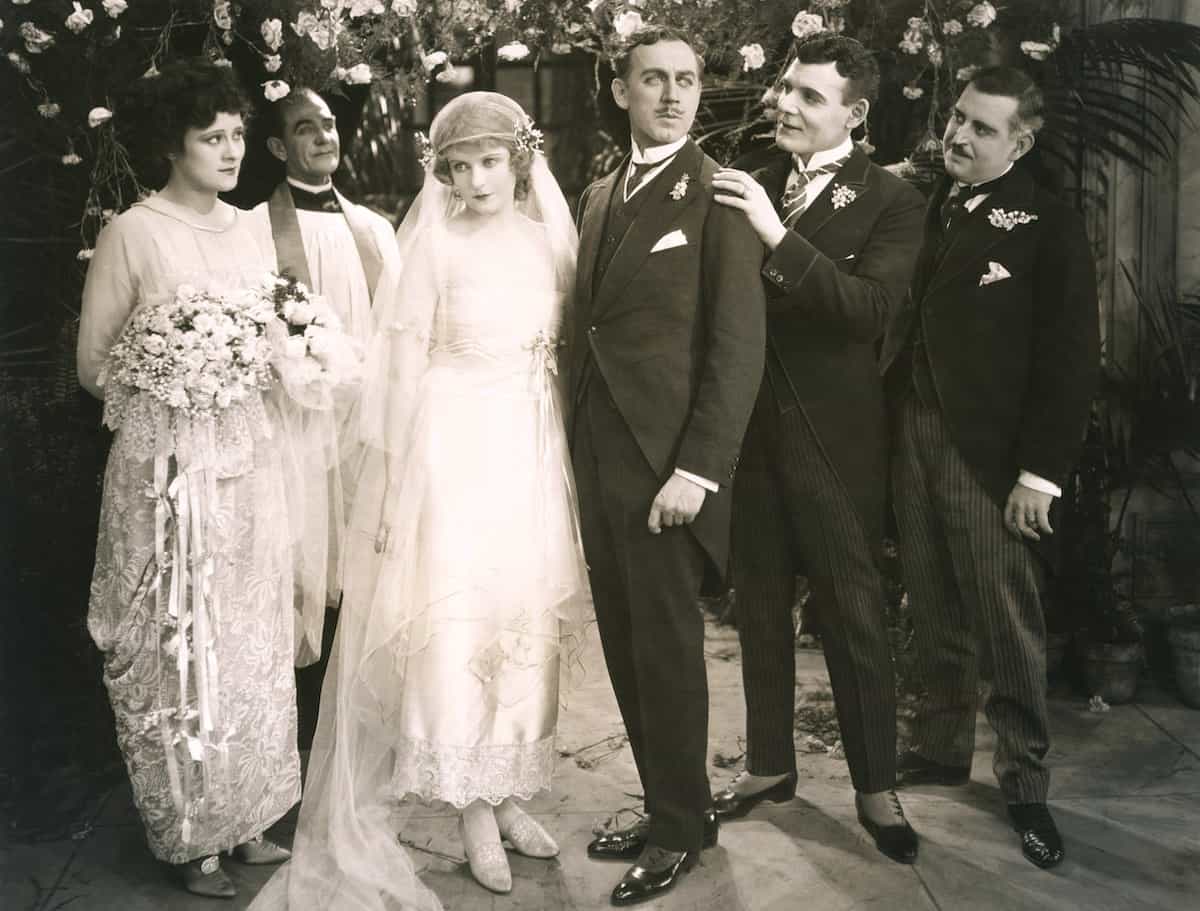
Music and Entertainment
Wedding receptions in the 1920s were often held at speakeasies or clubs. Entertainment such as live music, dancing, and gambling adding to the festivities.
Music
The 1920s was a decade of significant cultural and social change, reflected in the music and dance styles of the time. Weddings in the 1920s were known for their lively music. Energetic dance parties were the rage, with popular dance styles such as the Charleston and the Foxtrot.
Jazz was the dominant music genre of the 1920s. Jazz bands typically consisted of a brass section (trumpet, trombone, and saxophone), a rhythm section (piano, drums, and bass), and a vocalist. The music was lively, rhythmic, and energetic, perfect for weddings and other celebratory events.
In addition to jazz, popular music genres of the time included swing, blues, and ragtime. Many of these genres were influenced by African American musical traditions. They reflected the social and cultural changes that were taking place in American society.
Dancing
Dancing was an integral part of 1920s weddings, with popular dance styles including the Charleston, the Foxtrot, and the Waltz.
The Charleston was perhaps the most iconic dance of the 1920s, characterized by its fast-paced movements and intricate footwork. The Foxtrot, on the other hand, was a more formal and refined dance style that was often performed to slower jazz or swing music. The Waltz was a classic ballroom dance that had been popular since the 19th century, and it remained a popular choice for weddings and other formal events in the 1920s.
Dance halls and ballrooms were popular venues for weddings in the 1920s, and they often featured live jazz bands that played throughout the night. Many couples hired dance instructors to teach their guests how to dance the latest styles, ensuring that everyone could participate in the celebration.
In addition to the popular dance styles of the time, several dance crazes emerged during the 1920s. These included the Shimmy, and later on, the Lindy Hop.
Decor
Wedding decor during the 1920s was heavily influenced by the Art Deco movement, featuring geometric shapes, metallic accents, and bold colors.
The use of exotic flowers and feathers in bouquets and centerpieces added a touch of whimsy to the overall aesthetic.
Food and drink
Wedding menus in the 1920s were characterized by combining traditional dishes and modern convenience foods. Technology and transportation advances allowed greater access to a wider variety of foods. This lead to the rise of new culinary trends and styles.
Some of the most popular foods of the time included:
- Chilled salads: Chilled salads, such as jellied chicken and seafood salads, were popular at weddings in the 1920s. They were easy to prepare and could be made in advance, making them ideal for large gatherings.
- Cold cuts and sandwiches: Cold cuts and sandwiches were also popular at 1920s weddings. They could be prepared in advance and served buffet-style. Popular sandwich fillings included ham, chicken, and tuna salad.
- Fruit and vegetable platters: Fruit and vegetable platters were common at 1920s weddings. These provided a healthy and refreshing alternative to heavier dishes.
- Roast beef and poultry: Roast beef and poultry were classic choices for wedding entrees in the 1920s, often served with a side of vegetables and potatoes.
- Desserts: Desserts at 1920s weddings were often rich and indulgent, with popular choices including ice cream, cakes, and pies.
The era’s cocktail culture also played a role in wedding receptions, with the popularity of drinks such as the Tom Collins, gin rickey, mint julep, and the sidecar.
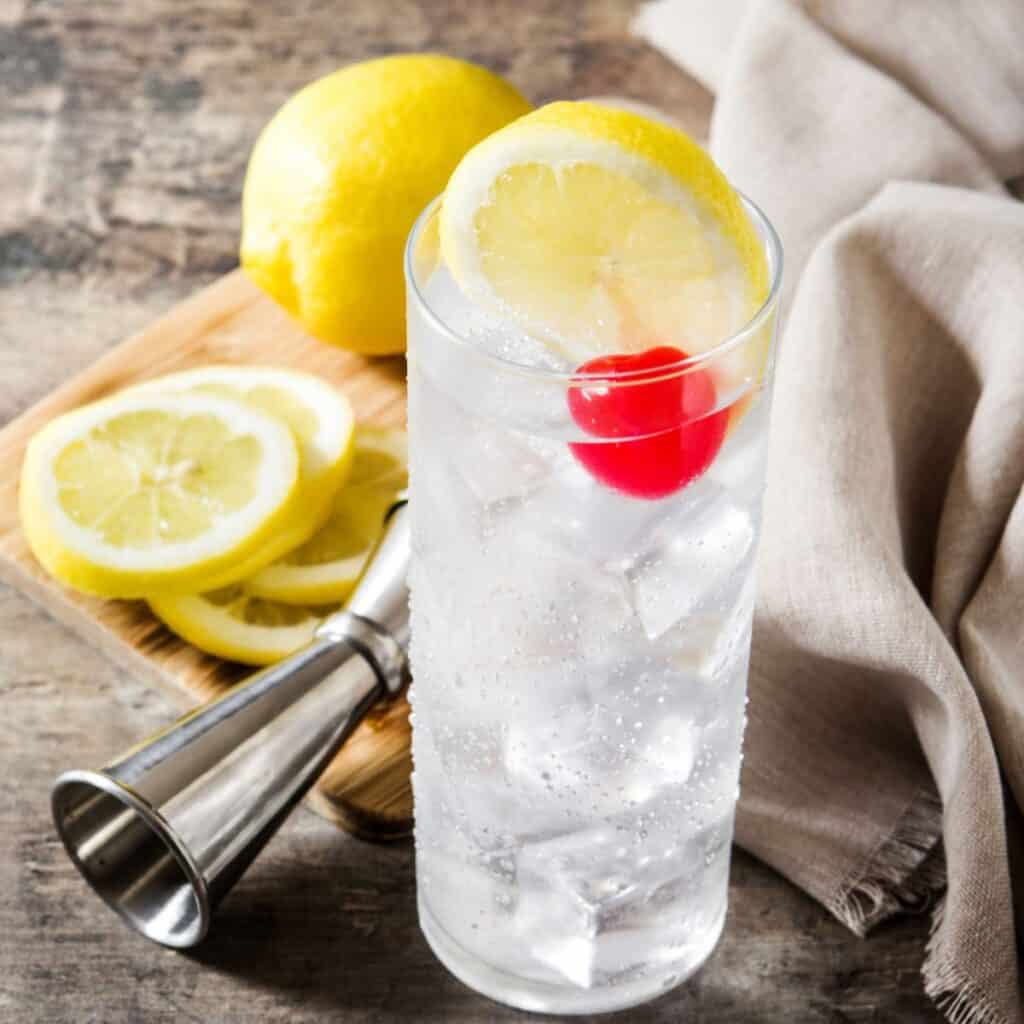
Influence of Prohibition
The 1920s were also defined by Prohibition, the national ban on alcohol that lasted from 1920 to 1933. While the law did not stop people from drinking, it did give rise to the underground speakeasy culture. Many couples during this time held their weddings at speakeasies, which offered a more intimate and exclusive setting than traditional venues.
The rise of the automobile
The 1920s also saw the rise of the automobile, which had a significant impact on wedding culture.
Couples began incorporating cars into their weddings, with the bride and groom often driving away in a stylish automobile decorated with ribbons and flowers.
This trend represented a shift away from traditional wedding transportation, such as horse-drawn carriages.
Wedding etiquette
Wedding etiquette during the 1920s was heavily influenced by Emily Post, a prominent author and socialite who wrote extensively on the topic. Post’s book, “Etiquette,” was first published in 1922 and became the go-to guide for proper social behavior.
Her guidelines for weddings included sending formal invitations at least six weeks in advance, providing a gift registry for guests, and serving refreshments after the ceremony.
Final thoughts
Weddings during the 1920s were defined by the cultural changes taking place during the decade. From the rise of jazz music and speakeasy culture to the influence of Prohibition and the popularity of Art Deco design, weddings in the 1920s represented a departure from traditional norms.
While many of these trends have come and gone, the influence of the 1920s can still be seen in modern wedding culture, particularly in the continued popularity of vintage-inspired fashion and decor.

